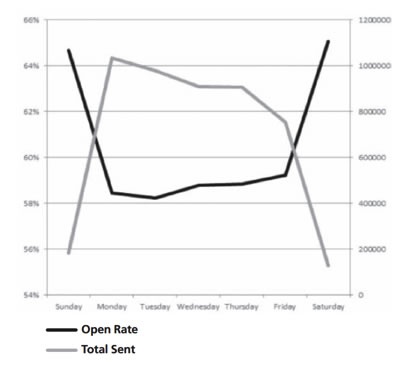Why Are People Ignoring Your Email Marketing?

Google “email mistakes” and you’ll find endless resources. But they all say the same thing about email marketing:
- Include a first name in the email.
- Avoid using business jargon.
- Don’t forget to include a greeting.
- Don’t say “to whom it may concern.”
- Make sure you change the subject line.
- Spellcheck your work.
- Avoid emoticons.
And the list goes on. But all of these suggestions are common sense suggestions for beginner email users. If you’re a business professional today, what are the mistakes you’re not seeing, that aren’t obvious, and are preventing your emails from reciprocating a response? With the following email marketing tips, you’ll finally learn why people are ignoring your emails and how to fix those mistakes. After all, successful email marketing is a great way to create a resonating brand image for your business, so you don’t want to mess that up.
Mistake #1: Your Subject Line Focuses On the Wrong Goal
It’s no secret that an effective subject line is needed to ultimately get an email opened. But when writing these subject lines, think about your true end goal. The goal of any email you send should simply be about getting a response. It shouldn’t be about closing a deal, finalizing a partnership, or hiring a candidate. Until you can get a response on your email, until you can truly connect with your recipient, you’re nowhere closer to your goal. Here are some example subject lines we’ve seen work:
- [First Name], quick question for you.
- [Mutual connection] recommended I get in touch.
- Ideas for [what’s important to them].
- Question about [recent trigger event].
- Question about [a goal they have].
- Thoughts about [title of their blog post]
Mistake #2: You’re Sending All Your Emails at the Wrong Time
Most business emails are sent during business hours. But recent data from the 2014 Email Open Rates Report shows something slightly surprising.
The gray line shows the number of emails sent each day of the week. This line illustrates that most emails were sent on Monday, with over 1,000,000 sent that day. The least amount of emails were sent on Saturday and Sunday, of course, with under 200,000 sent on each of those days.
The black line shows the open rate of the emails for each day of the week. The worst days for open rates are Monday and Tuesday. However, the open rate gradually increases over the course of the week and then spikes on Saturday and Sunday.

Now we’re not saying that you should alter your strategy to send all emails on the weekend, but there should be some strategic balance. If you really want to capture the attention of someone important that isn’t getting back to you, try a Sunday night email. Otherwise, stick to your business hours.
Mistake #3: Using a Generic Sender Address
While many one-to-one emails come from an individual account, you may need to send to a larger group if want to update vendors about an important policy or process change, or you work in support and need to contact customers regarding a new feature update that fixed many product bugs.
Whichever the case, the name you include in the “From” field of your email can have a huge impact on your overall open rates. There’s been a number of studies that show sending emails from an actual person increases both the open and click-through rates.
 And it makes sense—customers and contacts feel a more personal connection to your email when they receive it from “Maggie Georgieva” than they do from Company X, or worse, some version of “donotreply.com.”
And it makes sense—customers and contacts feel a more personal connection to your email when they receive it from “Maggie Georgieva” than they do from Company X, or worse, some version of “donotreply.com.”
Mistake #4: Personalizing Without Actually Personalizing
When we say personalization, we don’t mean replacing “Hi there” with “Hi Amanda.” Our email recipient is smart enough to know that with the click of a magic digital button, our emails can be personalized with first name, company name, and so on. Personalizing in today’s business environment involves taking the time to learn about the individual you’re contacting.
This email should be personalized in a few ways:
- Relevance: Not only should it include the first name, but it should also open with a custom event in the recipient’s life.
- Connect: It should connect the recipient’s expertise with your own as the sender.
- Next Step: It should provide a specific timeframe to chat.
Mistake #5: Sending Another Email When You Don’t Get a Quick Response
It’s easy to find yourself clicking refresh repeatedly in your inbox after sending an important email. After a day of seeing no response back, you jump to the refresh game again the next day. But that day of impatience leads you to send another email. We need to be smarter than that.
Rather than constantly looking for a response to your email, constantly look to see if your email has even been interacted with. Has the email been opened? Has the link in your email been clicked? Just because someone hasn’t responded to your email, doesn’t mean they’re not actively engaging with it. And if they are engaging, we need to give them the time they need to respond on their own—while having the satisfaction that they’ve seen it.
With these great email marketing tips, you should be able to avoid the most common email mistakes that businesses tend to make.
Read another blog – Email Marketing, is it dead or alive?
